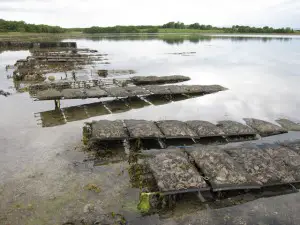
Oysters have long been used as aquatic ornaments as well as a major source of seafood for seafood lovers. Rapid extraction has led to the need for oyster farming in many countries. Here are some facts related to oyster farming.
Fact 1:
Over-harvesting, diseases and habitat loss have been greatly responsible for reducing the natural occurrence of oysters in the aquatic environment. This has led to the farming of oysters by getting them to survive in an artificially created habitat. (UMD)
Fact 2:
The population of oysters in their natural habitats had dropped to a very low level of almost 0.8 percent in the early 1800’s. (UMD)
Fact 3:
Besides supplying oysters for eating, oyster farming also serves as a simulating environment for establishing an artificial habitat for the study of oysters!
Fact 4:
The most difficult part in oyster farming is maintaining the level of food balance, as many farms experience an undernourished batch due to the imbalance and intake of food by the oysters. (DBO)
Fact 5:
The water temperature has to be kept above 500C to increase the feeding activity of the oysters. (DBO)
Fact 6:
To get healthy oysters, farmers need to put in a lot of algae and other natural waterborne nutrients. (DBO)
Fact 7:
Oyster farming is not a new phenomenon: the Japanese and Romans have been practicing oyster farming for centuries. The modern day farming has taken up the classic techniques with some innovations to raise healthy oysters. (NSW)
Fact 8:
The commercial production of the oysters in New South Wales, Australia takes place today in almost 41 estuaries between Eden in the south to the Tweed River located in the north of the country. (NSW)
Fact 9:
There are three distinct cultivation techniques that have been used in New South Wales, namely, rock culture, stick culture and tray culture. (NSW)










Leave a Reply